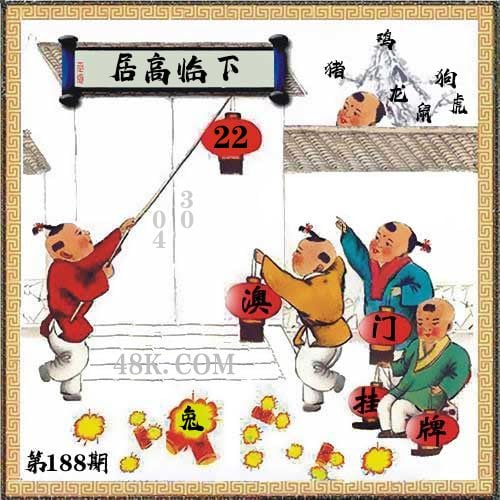站点关键词
- 新2025澳门天天开好彩
- 777778888精准免费四肖
- 2025精准资料免费大全.
- 2025新澳天天开奖资料
- 新澳2025精准免费大全
- 2025年澳门天天有好彩
- 2025年免费正版资料大全
- 7777888888精准四肖
- 2025新澳门精准正版免费
- 2025香港正版资料全篇
- 2025正版资料免费公开
- 2025正版精准免费大全
- 2025新澳门天天开好彩.
- 2025新澳正版资料最新
- 最准一码一肖100%凤凰网
- 新澳门天天彩免费提供
- 2025年正版资料免费大全
- 澳门天天彩精准免费大全
- 2025年新澳门全年免费
- 2025年澳门今晚必开的生肖
- 2025澳门天天开好彩精准
- 2025年正版资料免费
- 2025澳门天天免费精准大全
- 2025新澳天天开奖资料大全
- 2025年全年资料免费大全
- 2025全年资料免费资料
- 7777788888精准免费4肖
- 2025精准资料免费大全
- 2025新奥资料正版大全
- 今晚必出三肖2025
- 一码一肖一特一中2025
- 新澳门天天免费精准
- 2005新澳门天天开好彩
- 2025精准资料免费资料
- 2025新澳门精准免费
- 2025年新澳正版免费料
- 2025新澳精准正版免費資料
- 澳门天天免费精准大全
- 2025今晚必中必开一肖
- 新澳2025精准正版資料
- 2025精准正版资料大全
- 2025港澳免费资料大全
- 2025澳门精准正版免费四不像
- 2025新澳门今晚9点30
- 2025新澳门天天开好彩
- 2025澳门买马最准网站
- 7777888888精准免费四肖
- 2025新澳正版今晚资料
- 2025新澳门最精准免费大全
- 2025新澳门天天精准免费大全
- 2025新澳门天天免费精准
- 7777788888精准一肖
- 2025澳门特马网站www
- 新澳门天天免费精准大全2025
- 2025年全年资料免费公开
- 2025新澳门天天开大全
- 2025新澳门天天开好彩大全
- 2025新澳门正版免费正题
- 2025精准资料大全免费
- 2025最准最精准免费资料看
- 2025新澳门天天免费
- 2025港澳资料免费大全
- 2025年新澳门天天开好彩大全
- 2025新澳天天彩资料大全最新版本
- 2025澳门天天开好彩
- 2025新澳门精准免费大全168
- 新澳2025天天开彩资料
- 新澳门免费精准大全
- 2025全年资料免费大全功能
- 澳门一码一码100准确河南
- 2025今晚必出三肖
- 新澳2025年正版资料大全
- 2025新澳门天天开好彩/精选解析解释落
- 2025年正版资料全年免费
- 2025新澳精准正版免费大全
- 新2025正版精准免费资料
- 2025澳门天天免费大全
- 2025全年免费资料大全
- 新澳2025年正版资料
- 2025精准免费资料大全
- 2025新澳天天开彩资料
- 今晚必出三肖
- 2025新澳天天彩资料
- 2025年新澳门天天开好彩
- 2025年新澳正版资料大全
- 新澳门精准免费大全
- 新澳2025精准正版免费
澳门六合彩【挂牌】 更多»

|
188期 | |
|---|---|---|
| 挂牌 | 22 | |
| 火烧 | 兔 | |
| 横批 | 居高临下 | |
| 门数 | 04,03 | |
| 六肖 | 鸡猪狗龙虎鼠 | |
澳门挂牌解析
2025-187期正版彩图挂:40;挂牌:春风风人;六肖:狗羊鼠兔马龙;火烧:牛
解析:【出自】:汉 刘向《说苑 贵德》:“管仲上车曰:‘嗟兹乎,我穷必矣!吾不能以春风风人,吾不能以夏雨雨人,吾穷必矣。’”【示例】:他给人有春风风人的印象。
解释:和煦的春风吹拂着人们。比喻及时给人以良好的教育和帮助。
综合取肖:牛蛇羊虎猴狗
解析:【出自】:汉 刘向《说苑 贵德》:“管仲上车曰:‘嗟兹乎,我穷必矣!吾不能以春风风人,吾不能以夏雨雨人,吾穷必矣。’”【示例】:他给人有春风风人的印象。
解释:和煦的春风吹拂着人们。比喻及时给人以良好的教育和帮助。
综合取肖:牛蛇羊虎猴狗
【正版澳彩图库】 更多»
澳门管家婆100776.com
『成语平特』
188期
成语爆平特
【狡兔三窟】
开
¥00
准
187期
成语爆平特
【龙行天下】
开
龙14
准
183期
成语爆平特
【虎虎生威】
开
虎28
准
181期
成语爆平特
【猴子捞月】
开
猴10
准
177期
成语爆平特
【画蛇添足】
开
蛇49
准
澳门管家婆100776.com
『欲钱解特』
188期:
欲钱解特诗
开:¥00
《牛蛇虎狗发大财,本期特码出大数》
186期:
欲钱解特诗
开:狗08
《兔虎羊鸡发大财,本期特码出小数》
184期:
欲钱解特诗
开:虎28
《兔羊猴蛇发大财,本期特码出大数》
183期:
欲钱解特诗
开:鸡33
《狗虎龙猴发大财,本期特码出大数》
181期:
欲钱解特诗
开:羊23
《龙兔虎羊发大财,本期特码出大数》
澳彩图库心水图片资料专区
澳彩独家高手出版精料
澳彩综合全年资料大全
澳彩资料独家精准四肖
| 188期: ⑨肖 | 羊鼠猪狗兔虎蛇马鸡 | ????中 |
| 188期: ⑧肖 | 羊鼠猪狗兔虎蛇马 | ????中 |
| 188期: ⑦肖 | 羊鼠猪狗兔虎蛇 | ????中 |
| 188期: ⑥肖 | 羊鼠猪狗兔虎 | ????中 |
| 188期: ⑤肖 | 羊鼠猪狗兔 | ????中 |
| 188期: ④肖 | 羊鼠猪狗 | ????中 |
| 187期--长期跟踪,稳赚不赔! | ||
| 187期: ⑨肖 | 兔虎羊鼠龙狗鸡蛇牛 | 鸡45中 |
| 187期: ⑧肖 | 兔虎羊鼠龙狗鸡蛇 | 鸡45中 |
| 187期: ⑦肖 | 兔虎羊鼠龙狗鸡 | 鸡45中 |
| 187期: ⑥肖 | 兔虎羊鼠龙狗 | 鸡45中 |
| 187期: ⑤肖 | 兔虎羊鼠龙 | 鸡45中 |
| 187期: ④肖 | 兔虎羊鼠 | 鸡45中 |
| 186期--长期跟踪,稳赚不赔! | ||
| 186期: ⑨肖 | 鼠马鸡蛇兔牛虎猪狗 | 狗08中 |
| 186期: ⑧肖 | 鼠马鸡蛇兔牛虎猪 | 狗08中 |
| 186期: ⑦肖 | 鼠马鸡蛇兔牛虎 | 狗08中 |
| 186期: ⑥肖 | 鼠马鸡蛇兔牛 | 狗08中 |
| 186期: ⑤肖 | 鼠马鸡蛇兔 | 狗08中 |
| 186期: ④肖 | 鼠马鸡蛇 | 狗08中 |
| 185期--长期跟踪,稳赚不赔! | ||
| 185期: ⑨肖 | 龙牛鼠狗羊兔鸡猴猪 | 牛05中 |
| 185期: ⑧肖 | 龙牛鼠狗羊兔鸡猴 | 牛05中 |
| 185期: ⑦肖 | 龙牛鼠狗羊兔鸡 | 牛05中 |
| 185期: ⑥肖 | 龙牛鼠狗羊兔 | 牛05中 |
| 185期: ⑤肖 | 龙牛鼠狗羊 | 牛05中 |
| 185期: ④肖 | 龙牛鼠狗 | 牛05中 |
| 184期--长期跟踪,稳赚不赔! | ||
| 184期: ⑨肖 | 猴龙羊鼠虎鸡蛇兔猪 | 虎28中 |
| 184期: ⑧肖 | 猴龙羊鼠虎鸡蛇兔 | 虎28中 |
| 184期: ⑦肖 | 猴龙羊鼠虎鸡蛇 | 虎28中 |
| 184期: ⑥肖 | 猴龙羊鼠虎鸡 | 虎28中 |
| 184期: ⑤肖 | 猴龙羊鼠虎 | 虎28中 |
| 184期: ④肖 | 猴龙羊鼠 | 虎28中 |
| 183期--长期跟踪,稳赚不赔! | ||
| 183期: ⑨肖 | 鸡兔猴蛇龙猪羊虎狗 | 鸡33中 |
| 183期: ⑧肖 | 鸡兔猴蛇龙猪羊虎 | 鸡33中 |
| 183期: ⑦肖 | 鸡兔猴蛇龙猪羊 | 鸡33中 |
| 183期: ⑥肖 | 鸡兔猴蛇龙猪 | 鸡33中 |
| 183期: ⑤肖 | 鸡兔猴蛇龙 | 鸡33中 |
| 183期: ④肖 | 鸡兔猴蛇 | 鸡33中 |






